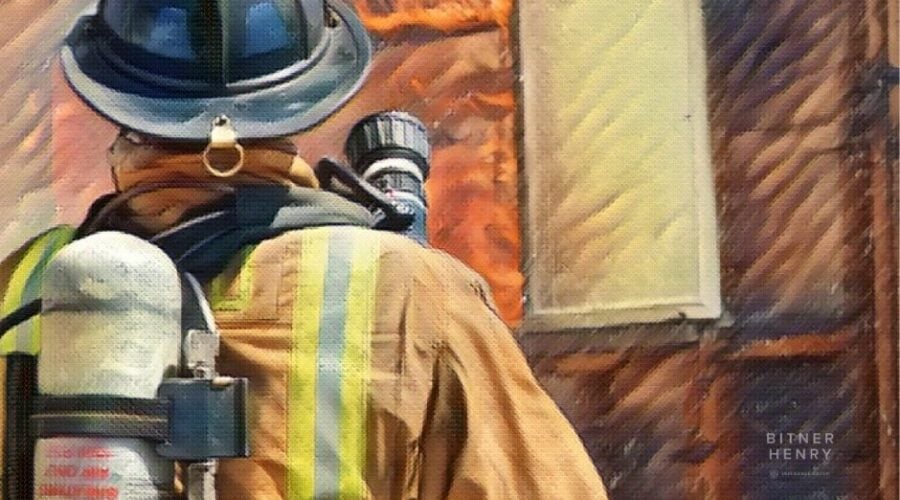
 We received this letter, sent to one of our customers from another church whose building was totally destroyed by a fire. Their letter was publicized and we are posting parts of their letter here.
We received this letter, sent to one of our customers from another church whose building was totally destroyed by a fire. Their letter was publicized and we are posting parts of their letter here.
Members and friends of the church gathered under the protection of the pavilion and watched in disbelief as the fire consumed the roof of the fellowship hall.
As smoke poured out of every crevice we hugged and prayed. We were supported by neighboring churches and pastors. We have been reminded that the “church is not the building.”
The fire started about 7 a.m. and, according to the fire investigators, the cause is officially ‘undetermined in origin’. There is no indication of arson. Five volunteer fire companies responded and worked hard to combat the blaze all the while in a steady rain.
In the months following, we have worked with our insurance company to replace and rebuild. Here are some lessons we learned:
Don’t assume your “replacement” cost on your insurance policy will be sufficient to re-build your entire building.
In fact, it is unlikely you will be able to replace a major loss from a devastating fire.
Due to the current building and labor costs, we will not be able to re-build the 9000 square feet structure we had with our insurance payment of $1.3 million (plus $288k for contents).
Whatever we build will have to be smaller and smarter to serve the community in the future.
Review your coverage in detail.
For example, how much coverage do you have for demolition? In this devastating loss, we will probably knock down what remains. It looks like our coverage is insufficient to pay for the demolition and removal of debris.
Schedule a meeting with your local insurance agent to review your coverage. Ask hard questions. Put yourself in our situation.
Take pictures or videos!
You will have to account for EVERY item in the church, both destroyed and that which suffered smoke and water damage. Everything!
What I wish I had done before the fire? Have volunteers go throughout all the rooms and take pictures and then store these on multiple sources, such as flash drives, the cloud, whatever, BUT keep the document in a safe place, off-site. Video and still pictures both are helpful.
- Choir Robes: Do you know how many you have? Take pictures and count them.
- Piano: Find the manufacturers identification plate that contains the model, serial number, and take a picture of that. Do the same for the organ and the pipes (hidden in the chamber also).
- Hymnals: What type and how many do you have? We lost many hymnals and pew bibles.
- Technology: Catalog the sound system, computers, screen projectors, and screen.
- Pews: The pews are so very expensive to replace. How many board feet do you have in pews? Do you have the name of the manufacturer, when they were made, and how much you paid for them? If you don’t, start now to gather that information.
- Lighting: Do you know how many ceiling lights you have, pot lights or chandeliers?
- Stained Glass: If it is highly valuable are you able to put a price on it? Do you know its history, who made it and when? If windows are memorials make sure you take a picture of them with the name.

Equipment. Board members are entrusted with keeping an inventory of all the equipment, furniture, and machinery in the church. This should also include office equipment such as computers, printers/copiers that normally escape the Board member’s attention. Take pictures of the identification plate that contains the serial number and model number of all your inventory. This can help immensely if there is a theft. Every computer, every furnace/water heater, every copier, every piano has one.
Do you have the information on your HVAC systems with serial and model numbers?
Save Receipts, forever!
All that you claim will be subject to depreciation so having receipts for the pews, chairs, table, the organ/piano, the sound system will put you in a stronger position to make your case. You could digitize the receipts or staple a copy to the manual/handbook, and file them in a safe place.
We found the receipt for the Hallet and Davis piano which was purchased in 2015 at a cost of $16,000.00. And we are glad we did! Before we found the receipt, no one could remember how much we paid, but now we know exactly. This is important documentation to provide to the insurance company.
Quality steel shelf or file cabinets will go a long way saving paper items and supplies.
 When closed they will keep out water, heat and fire for a significant amount of time. A fire-proof safe is a good source for preserving historical documents, official records, deeds and other essentials, if not in a safe deposit box at your bank.
When closed they will keep out water, heat and fire for a significant amount of time. A fire-proof safe is a good source for preserving historical documents, official records, deeds and other essentials, if not in a safe deposit box at your bank.
If you have a total loss, you will be pursued by third-party advocates who want to be your representative, but for a fee.
They will make the case for being an intermediary with the insurance company, promising to secure everything you are due but charging you a percentage of the compensation you receive for their services. They make the case that the insurance company will try to deny you full coverage which might not be true. Their services are questionable. If you choose to employ them, get references.
Do you know where the nearest fire hydrant is located?
For rural churches this is very important. During our fire, the fire company sent truck after truck to the nearest one about .6 mile from us, returned, and then emptied the water into a large portable pool in order to keep pouring water on the fire. What if you were to ask the county/city to install a hydrant closer to your location?
What fire prevention, fire safety, smoke detectors or fire alarm system do you have now, or could you have that will alert the local emergency dispatcher?
For example, have you investigated the cost of hard-wired smoke detectors? If we had this alarm it would have been triggered at least one hour before the fire broke out (my opinion) and may have saved the building.
Do you have the blueprints in a safe place?
When we met with the first insurance adjuster and the state police, we were asked to draw, to the best of our ability, the layout of the facility. That was a chore and far more difficult than you can imagine. We found them after they were needed.
Contact your insurance company right away!
While the fire was raging we called our local insurance agent who came to the scene and by the end of the day we had a claim started. (Brotherhood Mutual).
Finally, our denomination requires the Trustees to “review annually the adequacy of the property, liability, and crime insurance coverage on church-owned property, buildings, and equipment.” Never has that directive made such an impact on me as a pastor with over 30-years-experience, nor does it seem more important.
View Property Inventory and Assessment Checklists
Further Reading

Insuring Jewelry: How to Know if Your Coverage is Enough
A ring from a loved one. A bracelet handed down through generations. A watch or necklace marking a special occasion. Every reason you treasure a...

Protect Your Missions Travelers With Faith Ventures
If your ministry, school, or organization is planning a mission trip, travel insurance is an important part of the planning process that should not...

